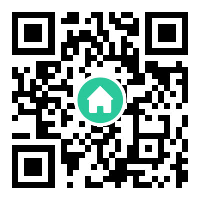Introduction to Telegram Bots
Telegram bots are automated programs designed to perform specific tasks within the Telegram messaging platform. These bots leverage Telegram's Bot API to interact with users, channels, or groups, offering functionalities ranging from simple commands to complex workflows. Since their introduction in 2015, Telegram bots have become a cornerstone of the platform's ecosystem, enabling developers and businesses to create tailored solutions for communication, productivity, and entertainment. With over 700 million monthly active users on Telegram, bots have emerged as powerful tools to enhance user engagement and streamline digital interactions.
The Evolution of Telegram Bots
Initially, Telegram bots were limited to basic tasks like sending automated replies or fetching data from external APIs. However, advancements in the Bot API have expanded their capabilities significantly. Today, bots can manage payments, host mini-games, deliver real-time notifications, and even integrate with third-party services such as Google Drive or CRM systems. The introduction of features like inline mode, webhooks, and custom keyboards has further empowered developers to build intuitive and interactive bot experiences. This evolution reflects Telegram's commitment to fostering innovation within its open-source platform.
How Telegram Bots Work
Telegram bots operate through a combination of the Bot API and server-side logic. Developers create bots using the BotFather, Telegram's official bot for generating API tokens. Once configured, bots can process messages, commands, or callback queries sent by users. For instance, a weather bot might parse a user's location request and respond with forecast data pulled from a weather service API. Bots can also utilize webhooks to receive real-time updates, ensuring instant responses. Additionally, bots support file sharing, multimedia content, and even inline queries that allow users to access bot functionalities directly within any chat.
Use Cases for Telegram Bots
The versatility of Telegram bots enables diverse applications across industries. In customer service, bots automate FAQs and ticket routing, reducing response times. E-commerce platforms deploy bots for order tracking and personalized recommendations. Educational bots deliver quizzes or language-learning exercises, while news bots curate and distribute content based on user preferences. Gaming communities use bots for trivia contests or role-playing games. Even developers rely on bots for monitoring server status or debugging code. These examples highlight how bots bridge the gap between users and services in a seamless, scalable manner.

Building Your Own Telegram Bot
Creating a Telegram bot requires minimal technical expertise. Developers start by registering a bot with BotFather to obtain an API token. Next, they write code in languages like Python, JavaScript, or PHP to define the bot's behavior. Frameworks such as python-telegram-bot or Telegraf simplify integration with the Bot API. Key steps include handling commands, processing user input, and deploying the bot to a server or cloud platform. For instance, a reminder bot might store task deadlines in a database and send alerts at specified times. Testing tools like @BotDebugger ensure smooth functionality before launch.
Challenges and Best Practices
While Telegram bots offer immense potential, developers must address challenges like security, scalability, and user privacy. Bots handling sensitive data should implement encryption and comply with regulations like GDPR. Rate limits imposed by the Bot API necessitate efficient code to avoid throttling. User experience is critical; bots should provide clear instructions and fallback options for unrecognized commands. Regular updates and analytics monitoring help maintain performance. Additionally, promoting bots through channels or directories like @StoreBot can drive adoption and gather feedback for improvement.
The Future of Telegram Bots
As AI and machine learning technologies advance, Telegram bots are poised to become more intelligent and context-aware. Integration with natural language processing (NLP) could enable bots to understand complex queries or hold dynamic conversations. Enhanced monetization features, such as subscription models or in-bot purchases, may attract businesses seeking revenue streams. Furthermore, Telegram's growing emphasis on decentralization aligns with trends in blockchain and Web3, opening doors for bots that interact with smart contracts or NFTs. With ongoing API updates and a vibrant developer community, Telegram bots will continue redefining how users interact with technology.
Conclusion
Telegram bots represent a fusion of simplicity and innovation, transforming a messaging app into a multifunctional platform. From automating mundane tasks to enabling cutting-edge applications, bots empower users and developers alike. As Telegram expands its global reach, the role of bots will only grow, cementing their status as indispensable tools in the digital age. Whether for personal use or enterprise solutions, Telegram bots exemplify the potential of automation to reshape communication and productivity.






